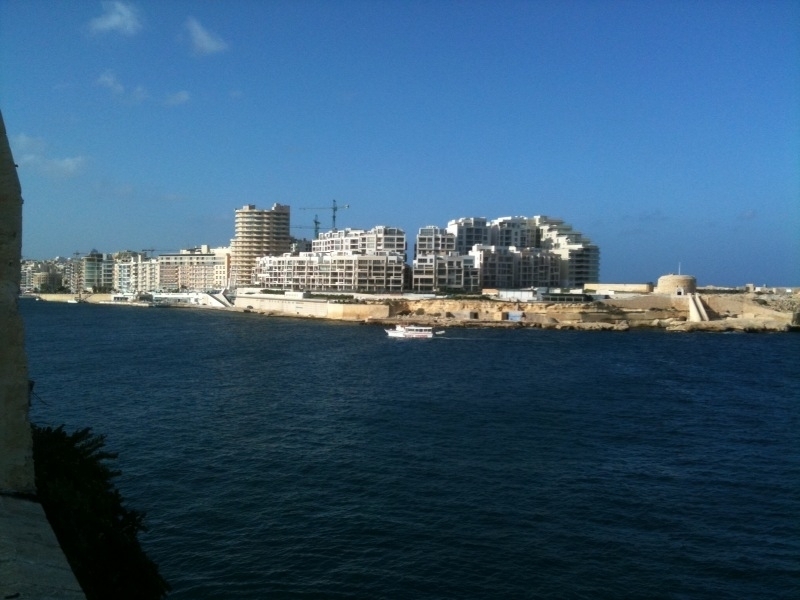Location is key to success in most businesses which offer custom to people. In property development it is even more so. The richest land owner in Malta is the government and this throws serious onus on our leaders to use Malta’s assets wisely. It is easy to trade Malta’s finest locations such as those overlooking Valletta from Sliema, around Fort St Angelo, at Spinola, Manoel Island with its scenic Lazaretto and Fort Manoel, while the fate of White Rocks and Hondoq ir-Rummien is still in the balance. Exploiting our beauty spots in the name of progress leads to speculation, is a bad example to private land owners and borders on irresponsibility as it can use the best of Malta with little or no respect for the future except for the planning gains imposed. It must also be said that if the contractual demands placed by government on developers were not so steep they would not brief their architects to build so high, so deep, so squat and so dense and we would now not be shedding tears over the offensive view of Tigne Point from Valletta, or from anywhere else for that matter. If developers, on the other hand, were not so grasping, as to build every square inch of land, then a balance would be found that equates to that elusive word ‘sustainability’. To those of us working in the environmental field this means finding the right balance in the management of the national assets, so that they are maintained to their current standard or are enhanced, with the purpose of allowing their future enjoyment.
be shedding tears over the offensive view of Tigne Point from Valletta, or from anywhere else for that matter. If developers, on the other hand, were not so grasping, as to build every square inch of land, then a balance would be found that equates to that elusive word ‘sustainability’. To those of us working in the environmental field this means finding the right balance in the management of the national assets, so that they are maintained to their current standard or are enhanced, with the purpose of allowing their future enjoyment.
Development uses land, green areas, demolishes gardens, exquisite buildings. It blocks the views of our sea, exploits heritage sites, dwarfs our baroque churches, dams our valleys, flattens our ridges, seals off precious light. It destroys everything that makes Malta the pleasant island it is. Development decisions on the part of our planners are always a compromise with the environment. Little by little, we lose land, we lose sea, we lose views, we lose light, we lose good visual ambience. Speculation builds with brute force with no respect for any of these assets and in the end it is always the environment that loses and sustainability is placed on the back burner. Once an asset is used, it is gone forever. A big responsibility therefore for those who determine the use of space whether national or private. Such responsibility is central to the Draft Strategic Plan for the Environment and Development to which the public are invited to contribute.
Foreigners often question why we have so many buildings, mostly unfinished and why they are so shabby. Fortunately for our old buildings the new Urban Regeneration Scheme can help improve this situation. For the rest, the only sustainability given to us by our new built heritage lies in its shocking ordinariness. It has given us buildings so ungracious and in some cases of such poor quality that they will all have to be rebuilt very shortly giving work to the builders of the future. Most times, there is no respite when walking or driving through the maze of new building, not even that offered by a single tree. If we care about our uniqueness we will stop the island fading into crass mediocrity.
So, if there are solutions to be found so previous planning errors are not compounded, as may be the case with Manoel Island, the government must be brave enough to confront its errors. The new board at Mepa, since its reform, has shown sensitivity. If there was a board to look for a solution, I am confident it would be this one. I believe they have recognised that we cannot afford to destroy the country’s assets and compromise the country’s historic worth to fall into more mediocrity
Din l-Art Helwa has always been of the opinion that Manoel Island should not be turned into a high density development and was against the project as approved by Mepa. While not entering into the commercial merits of the proposal put forward recently by the Midi chairman, there may be an opportunity now to ensure that this sizeable tract of land be turned into a heritage park with Fort Manoel as its focus, with trees, gardens, public spaces for recreation and possibly limited sporting facilities. The importance of having such space for public leisure cannot be underestimated within such a densely populated area.
We hope that any new scheme for Manoel Island, if approved, will not destroy Lazaretto’s panoramic appeal with adjacent or overhead modern building, nor bury Fort Manoel and its splendid restoration. We also augur that any new development can set good modern architectural parameters that are recognizable as solely Maltese. This is a huge challenge for today’s decision makers. I want our leaders and planners to prove they can and want to do better. Manoel Island gives them a chance to prove they care.


Comments are closed.